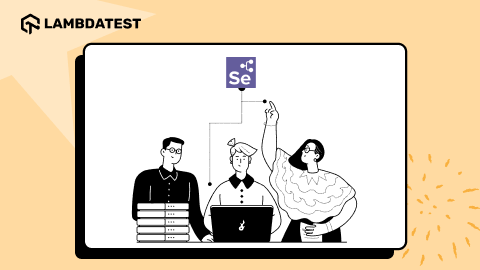Optimize your Testing Pipeline: Reduce Upload Times and Debug Faster
Aman Chopra
Posted On: May 16, 2024
![]() 23195 Views
23195 Views
![]() 4 Min Read
4 Min Read
Imagine you’ve just pushed a tiny code tweak in your codebase to fix a bug, and to test it, you trigger your CI/CD pipeline. But instead of immediate feedback, you’re greeted with the sight of a progress bar crawling at a snail’s pace. Why? The traditional CI/CD pipelines treat every code change like a full-blown update and fetch the entire codebase every single time.
This setup can lead to longer waiting times, especially for larger projects, with no feedback until the entire test suite finishes. This lack of immediate feedback is a nightmare for many testers and developers who are waiting to test their changes.
This was a similar case with one of our customers, who ran their tests on the traditional Jenkins CI pipeline setup. In this blog, we’ll deep dive into the challenges faced by one of our customers who manage large test suites and how HyperExecute, an AI-native Next Gen Testing platform, helped overcome those challenges with highly efficient end-to-end test executions by slashing down the overall testing and feedback loop time.
HyperExecute: A Solution to Accelerate Your Testing Productivity
HyperExecute enhances testing efficiency with features like Incremental Upload and FailFast, minimizing waiting times and accelerating feedback loops. Let’s see how:
Incremental Upload: No More Uploading the Entire Codebase Every Time
Our customer, a fast-growing startup, relied on the Jenkins CI pipeline for their automated testing. Every time they encountered a failed test or made even a tiny code tweak—say, fixing a minor bug—it triggered their complete testing cycle.
This meant the entire codebase, a massive collection of files, had to be fetched onto Jenkins and then get triggered. This resulted in long waiting times for their QA team, eventually hindering and slowing down the entire process of diagnosing and fixing issues.

This drastic reduction in the test payload has several key benefits:
- Reduced Waiting Time: Developers no longer have to wait for lengthy uploads, allowing them to push code changes and iterate faster.
- Faster Feedback Loop: The QA team receives test results quicker, enabling them to identify and address issues promptly.
- Improved Efficiency: It frees up valuable time for both developers and testers, allowing them to focus on higher-level tasks.
differentialUpload ensures complete codebase testing while focusing upload efforts on the updated code portion. This created a win-win situation for the development and QA teams, leading to a more productive and efficient testing process.
Faster Feedback, Faster Fixes: Eliminate the Waiting Time with Failfast
With the Jenkins-based CI pipeline, the QA team encountered another hurdle. Whenever a test failed, they had to rerun the entire test suite. This could take several hours, depending on the suite’s complexity.
This meant that even if a critical bug was causing early failures, the QA team had to wait for the entire test suite to finish before they could debug the root cause of the problem. This was causing significant delays in the testing process, leading to frustration and decreased productivity among team members.
HyperExecute’s FailFast feature automatically aborted their test execution after a predefined number of consecutive failures. This helped their developers, or QA’s, focus issues first and debug tests quickly.
With more immediate identification of failing tests, developers were able to receive feedback and begin fixing issues sooner. This led to a faster feedback loop between the development and QA cycles, accelerating their overall delivery process.

Conclusion
HyperExecute’s features weren’t isolated solutions; they worked together to revolutionize our customer’s testing processes. differentialUpload eliminated redundant uploads, slashed test turnaround times, and freed up valuable developer time. Additionally, FailFast empowered QA teams to identify failing tests quicker, allowing them to focus on the most critical issues. This one-two punch of faster execution and targeted debugging resulted in a drastic increase in efficiency.
Our customer’s QA team got the results with lightning speed. They were able to pinpoint and fix bugs significantly faster, ensuring a smoother development experience, which ultimately delivered high-quality software at an accelerated pace. HyperExecute transformed testing from a bottleneck into a powerful driver of development efficiency, allowing them to bring their product to market faster and with greater confidence.
Got Questions? Drop them on LambdaTest Community. Visit now














